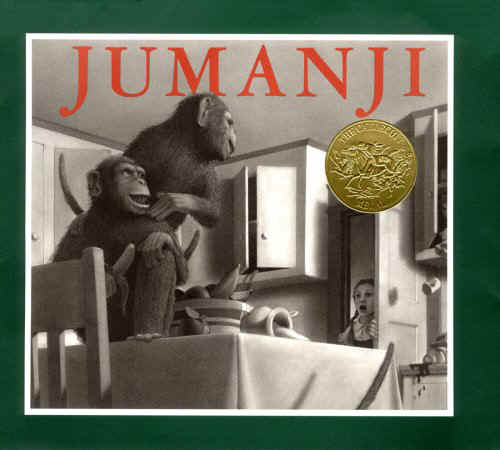Week 2 Book Reflection
REOL 536
Jumanji

Van Allsburg, C. (1981). Jumanji. Boston, MA: Houghton Mifflin
Company.
I had never read this popular picture book by
Chris Van Allsburg and I was delighted by the story.
Summary:
Two bored children were looking for some entertainment after their
parents left them home alone for the afternoon.
The children found a board game in the park with a warning note
attached. They ignored the warning and
took the game home anyway. As they began
to play the game, wild animals and natural disasters began to appear inside
their house! Their house was being
destroyed and they were in danger, but they had to keep playing because the
game would not end until someone won.
Reflection:
The illustrations are realistic and, even though they are black and
white, they are truly works of art; I
can understand why this book is a Caldecott Award winner. The genre
of this book is fantasy because it could not happen in real life. The plot
is unique and creative with a very pleasant ending. The characters
are given a lot of depth because there are only two main characters; even
though the events in the story are unrealistic, the children are very believable.
·
Common
Core Standard 3.NF.1: Understand a
fraction 1/b as the quantity formed by 1 part when a whole is partitioned into
b equal parts; understand a fraction a/b as the quantity formed by a parts of
size 1/b.
·
Common
Core Standard 3.NF.3d: Compare two
fractions with the same numerator or the same denominator by reasoning about
their size. Recognize that comparisons are valid only when the two fractions
refer to the same whole. Record the results of comparisons with the symbols
>, =, or <, and justify the conclusions, e.g., by using a visual fraction
model.
So what type plot is it? And what makes the characters believable? What is it that makes it no able to happen in real life? Be sure to support your statements with evidence.
ReplyDelete